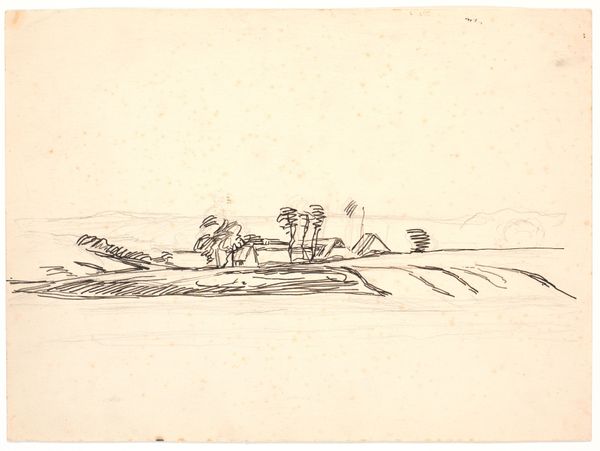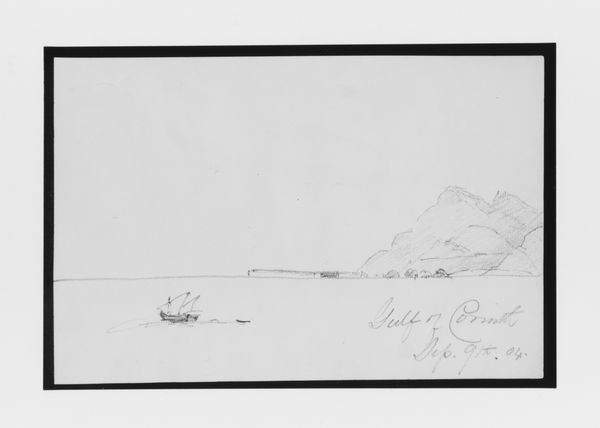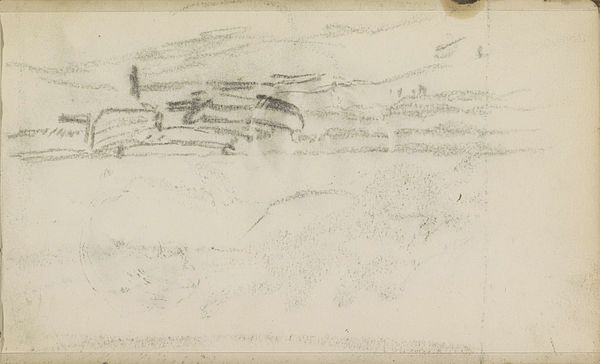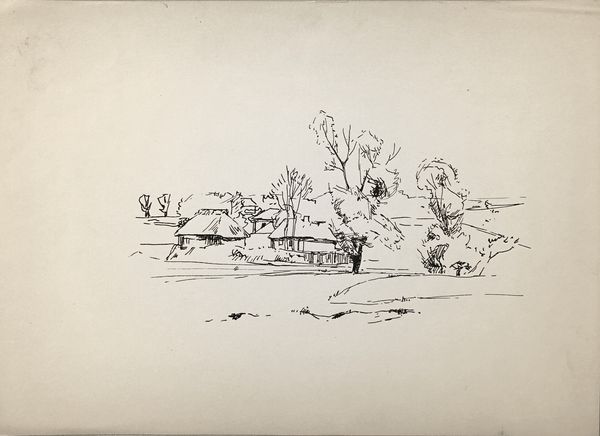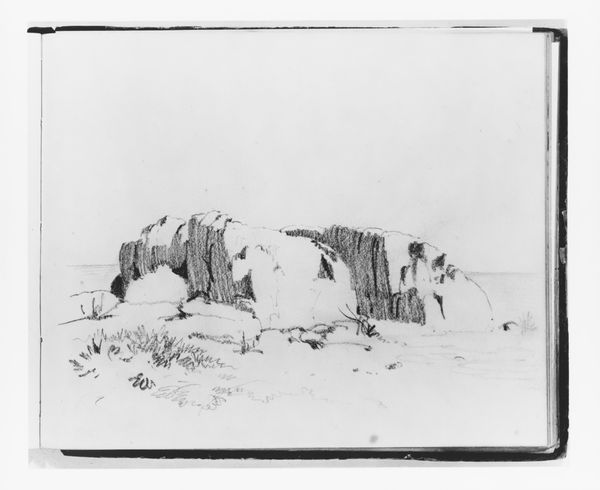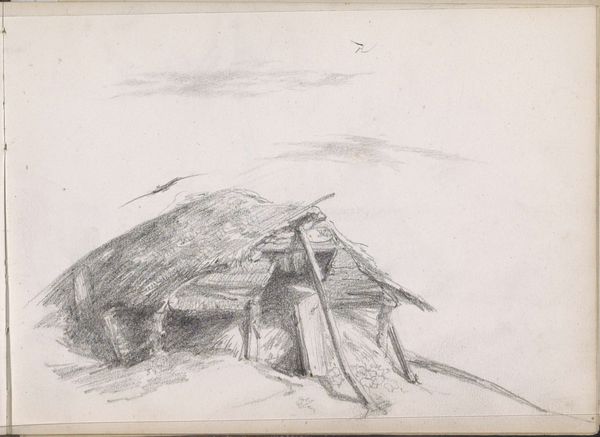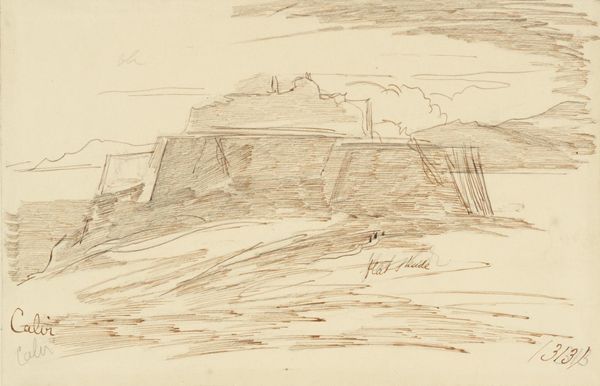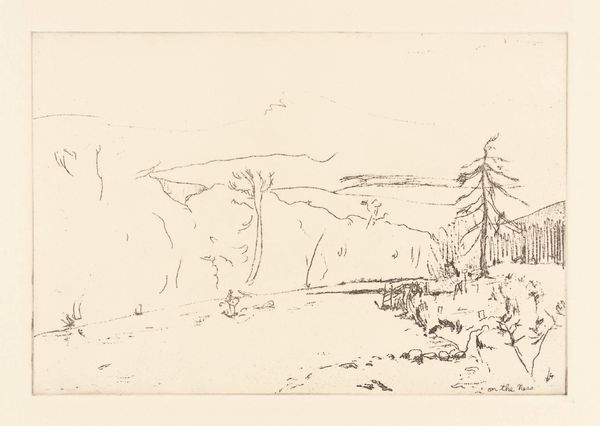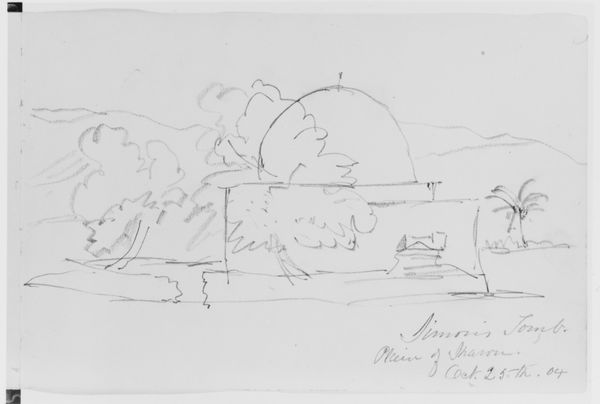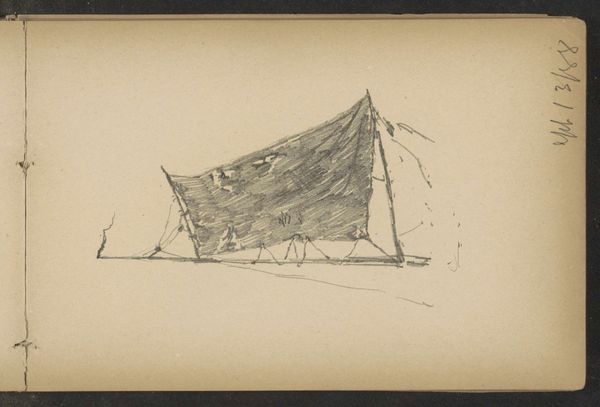
drawing, paper, pencil
#
drawing
#
landscape
#
paper
#
sketch
#
pencil
#
line
Dimensions: 5 1/4 x 8 1/4 in. (13.3 x 21 cm)
Copyright: Public Domain
Editor: This is "Well on Plain of Acre," a pencil drawing from 1904 by Mary Newbold Sargent, currently held at the Metropolitan Museum of Art. It's a rather sparse scene, very sketch-like, and gives the impression of a momentary observation, perhaps during a journey. What resonates most for you in this piece? Curator: This drawing speaks volumes through its simplicity. Wells, especially in arid landscapes, carry deep symbolic weight. They represent life, sustenance, and communal gathering places. This well, placed on the Plain of Acre, evokes a powerful image. Acre itself, a historic city with layers of conquest and cultural exchange, imbues the site with significance. What does the well signify? Is it simply a water source, or something more profound given its location? Editor: I hadn't considered the broader context of Acre itself. Knowing its history definitely adds a layer. I was mainly focused on the lone figure at the well; it appears to be the focus. Curator: Observe the lines themselves. Sargent's rapid, almost nervous marks construct not just a well, but a visual memory. The fragility of the lines mirrors the precariousness of life sustained by such a resource, evoking history and narrative. Does this quick capturing invite a feeling of instability to you? Or perhaps of immediacy? Editor: I see what you mean. The looseness could indicate that, perhaps a snapshot of a deeper connection with nature. It encourages pondering on survival in desolate lands. Curator: Precisely. The act of sketching, of rapidly recording, becomes an act of cultural preservation, imbuing everyday objects with timeless relevance. Sargent isn’t just showing us a well, she’s showing us resilience. What did you learn? Editor: I now look at such simple structures quite differently. Water well imagery might hide narratives of human interaction through a simple medium!
Comments
No comments
Be the first to comment and join the conversation on the ultimate creative platform.
